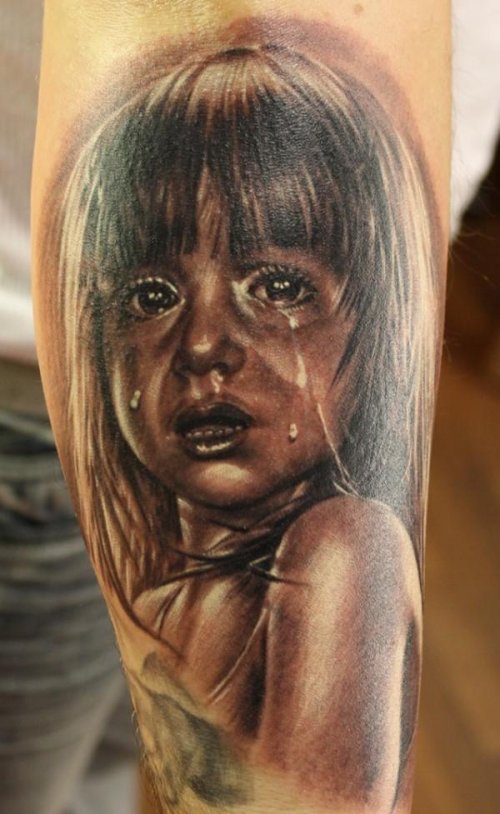The Living Canvas
Posted: February 29, 2012 Filed under: Contemporary Art Issues, Thoughts on Art, Toronto Artists | Tags: Adrian Dominic, Anil Gupta, Art, Biomechanical, Cory Ferguson, Guy Aitchison, Pete Belej, Sailor Jerry, Shige, Tattoos, Zhivko Baychev 1 CommentTattoo culture has seen a surge in popularity over the past few decades, and old stigmas once associated with the practice are fading away. As this art form becomes increasingly accepted by mainstream culture, it continues to evolve in interesting ways. In the past, tattoos were perceived almost exclusively as indicators of affiliation with the shady world of bikers, delinquents and rebels. Today, they fulfil a far wider variety of functions. Tattoos are worn like statement pieces or jewelry by some individuals, while for others, having a tattoo is comparable to owning an exquisite painting. Meaningful phrases and imagery are popular tattoo subjects, as they can permanently capture ideas, memories, or beliefs. As is the case with fine art, some people will appreciate tattoos from afar, but do not want to commit to ownership.
At Norman Felix, we specialize in contemporary fine art, but we also love to branch out and explore trends outside of that. This post is meant to pay homage to some styles, artists, and aesthetics in the world of tattooing that we particularly enjoy. It is impossible to cover such a broad and complex subculture in a single post, so this is just a roundup of our personal favourites. We hope you enjoy this selection of drawings on the ‘living canvas’!
1. Old school/traditional
The first thing that comes to mind when one thinks of tattoos in Western culture is the traditional, “old school” style, the king of which is Sailor Jerry. This look emerged in the late 1920s and is still referenced and replicated frequently to this day. It often features patriotic as well as nautical imagery (ships, anchors, sparrows, and of course pin-ups to name a few). Images are boldly outlined, and highly stylized. Depictions of women are cartoonish, favouring ample curves, large bosoms, and very basic facial features.

A neo-traditional tattoo done by Pete Belej (Toronto, ON) – the key stylistic elements of heavy outline and relatively simple graphic representation are evident, but the subject matter is contemporary. This artist has made a genre his own: note the extra embellishments around the image as well as a trace amount of abstraction.
2. Realism/portraiture
Realistic tattoos are extremely challenging and risky, and they can (if executed by the wrong hand) lead to disaster. There is no room for error in the process of tattooing something true-to-life, especially a portrait. Imagine the stress of trying to replicate the precise likeness of an individual on a surface that is moving, swelling, bleeding and breathing!
3. Biomechanical
If you love science fiction, you will probably appreciate this style. Biomechanical tattoos became popular several decades back, around the release of the first Alien movie in 1979. H.R Giger, who designed many of the creatures from the Alien movies, can be credited as a major source of inspiration. This aesthetic involves intertwining parts of human/organic forms with technological imagery. For example, replacing veins with tubes or wires, or throwing in some cogs and fuses to create an android-like image. Often these tattoos appear three-dimensional and futuristic. They can be dark, gritty, black and white pieces, or can feature explosive shapes and electric colours.
4. Japanese
Traditional Japanese tattoos are done painstakingly by hand, as opposed to by machines, and typically cover large areas of the body. In some cases, the entire body can be covered with a single design. Many of these designs are extremely intricate and are based upon traditional metaphors, stories, or fables. While the range of imagery is nearly infinite, some of the more popular designs include lotuses, waves, koi, and dragons. Each symbol (or combination of symbols) carries meaning. For example, a koi fish transforming into a dragon symbolizes overcoming adversity or personal struggle. Much care must therefore be taken in selecting the design for this type of tattoo, so as to avoid accidentally communicating the wrong message.

A traditional bodysuit by an artist known as Shige. Who needs clothes when your body is covered in this beautiful, intricate decoration?
5. Pointillism

Tattoo artist Anil Gupta created this incredible reproduction of “A Sunday on La Grande Jatte” by Georges Seurat, a Nineteenth-century artist famous for his pointillist renderings.
Pointillism is a challenging feat for any tattoo artist and subject to undertake. Tattooing on skin takes much longer than drawing on paper, and anybody who has worked in pointillism (which involves the creation of an image using tiny individual dots) knows that this style is insanely time consuming. This form of tattoo is demanding and labour intensive, and precision is critical.

The image above could easily be mistaken for an optical illusion, but it is real! This incredibly detailed design is by Cory Ferguson, a true master of tattoo pointillism.
Tattooing is an art form that requires talent, dedication, and skill, and those who have mastered it deserve recognition and respect. There are thousands of world-renowned tattoo artists who have cult-like followings comparable to those of many popular fine artists. We look forward to seeing what new directions this art form takes in the future!




